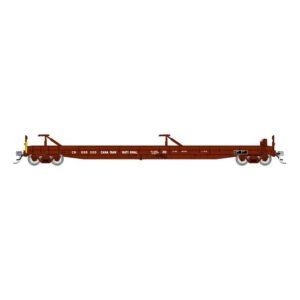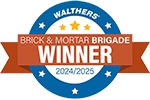Canadian Piggyback Flat Car
Prototype Information
Both of Canada’s major railways launched piggyback (TOFC) services in the 1950s. By the late 1960s and early 1970s, traffic had grown, and both railroads needed flatcars built for trailers up to 45 feet long. These cars weren’t just used in Canada—they often ran throughout the United States. They appeared in New York, Maine, and Vermont, and sometimes as far west as California. They ran in solid TOFC/intermodal trains or mixed into manifest trains. Being shorter than standard 89-foot TOFC cars, they could navigate tighter curves and operate more flexibly.
Canadian National ordered 283 cars from Vancouver Iron and Engineering Works (VIEW). Deliveries began in 1966. A major rebuild in 1976 converted them to a single hitch and renumbered them 687000–687184.
Canadian Pacific ordered 305 cars from Marine Industries Limited (MIL) in 1972, numbered 505625–505930. They remained in service through multiple rebuilds. Some had their second hitch removed, and container pedestals were added to many. A final batch was modified for Southern Ontario XpressWay service, with rub-rails to handle the unique loading and unloading at terminals.
Showing the single result
-

Rapido HO Canadian Piggyback Flat Car Canadian National
$46.00 Select options This product has multiple variants. The options may be chosen on the product page

